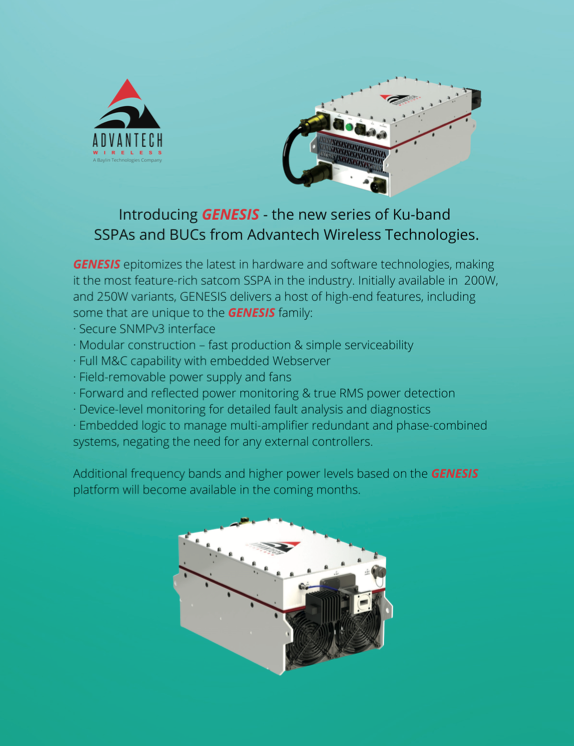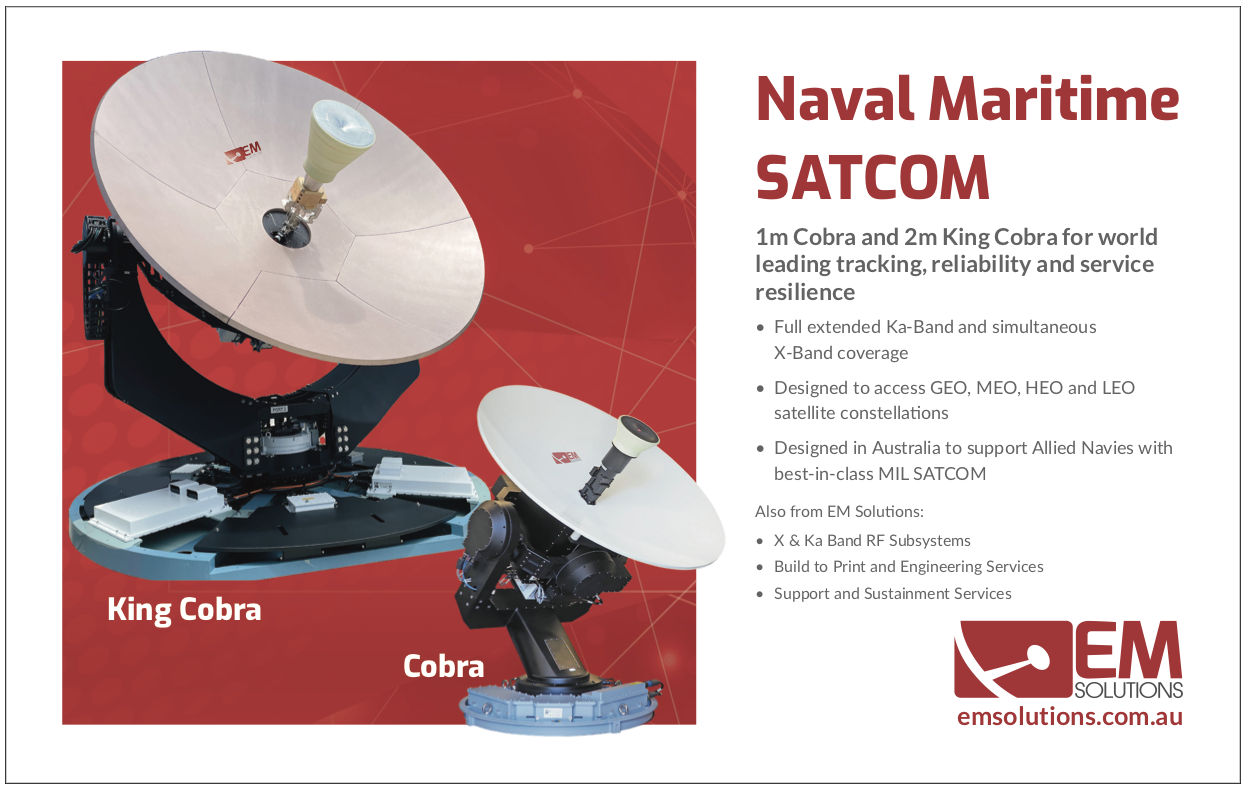For decades, space has remained a commercial domain despite the military forces initiating some of the first space programs and missions. Although primed by defense requirements, space was preempted by the commercial domain as the influence of space in enabling an enhanced quality of life for citizens across the globe took precedence over the ability to strentghen military capabilities.

Commercial satellite operators and civilian space agencies dominated the space domain with multiple missions across Earth Observation (EO), communication, navigation, and deep space exploration.
Along this journey, the defense agencies remained active in maintaining a certain set of space capabilities before migrating to using commercial versions.

It proved convenient to allow the commercial space market participants to design, develop, deploy, and maintain the space assets while the capabilities were used by the defense agencies. The convenience and its preference have only grown over the decades.
The defense entities responsible for managing the military space capabilities evolved into space commands reporting to air force leadership. The space commands evolved across the forces globally, maintaining the trend of them being a subset of one of the military services, with the air force being the most common. Such began to change as the space industry evolved, especially when the industry opened to a large number of commercial market participants.
Although at a slow pace, the space industry developed reliable technologies, which traditionally took a long time in the research and development phase before being commercialized.
With multiple commercial participants entering the industry, the technology development activities scaled up in magnitude. The consequence was a positive wave of enhanced and new space capabilities that started delivering value across applications and markets.
The space commands leveraged these developments and evolved into a phase where the military stakeholders remained primary customers who started following the commercial space markets, unlike the initial years when they conducted many technology development efforts internally.
Resurgence Of The Arms Race
NexGen Missile Defense Systems
With evolving geopolitical conditions, military forces expanded their capabilities and operations, which integrated space capabilities in multiple ways. Space commands evolved their roles to be key enablers of capabilities across air, land, and sea domains.
Military capabilities today are rather incomplete when detached from space capabilities. What used to be interesting, nice-to-haves, became absolute-must-haves, making space commands more responsible — however, space commands remained subsets within existing services (mostly theairforces).
The post-world-war spending on missile defense declined until the recent past. The threat perceptions demanded relevant deterrence capabilities over and above missile defense solutions. However, this started to change as hypersonic platforms gained prominence a few years ago in the missile defense domain. Adding to this was the persistent perception within military forces that the missile defense systems were aging and needed an upgrade as the post-world-war requirements were no longer relevant.
This renewed focus on missile defense systems brought in the need for persistent, forward- looking, sensing capabilities, i.e., military satellite-based intelligence, surveillance, and reconnaissance (ISR) capabilities.
The same grew stronger with the entry of hypersonic technologies within the military domain. Platforms operating in new high-speed regimes (upwards of Mach 5) have rendered the existing detect, track, and engage capabilities null and void.
While the missile defense domain was experiencing the emergence of new requirements, it also received the attention of political leadership which demonstrated the intent to fulfill the needs through suitable investments for the enhancement and development of nexgen capabilities, pivoting on hypersonic technology.

This trickled down into the management structure of military forces — space commands started assuming larger roles and responsibilities. The U.S. administration’s declaration of the need for a dedicated U.S. Space Force (USSF) finally pushed the U.S. Space Command to evolve into a separate military service alongside the army, navy, and air force.
Similar circumstances evolved across the globe decades ago but were not sustainable over the long term. For instance, the Russian Space Force was formed in the early ’90s but was later dissolved and recreated as a subset of the RussianAerospaceForceas of 2015.
The U.S., the Republic of China, Russia, France, and Iran have dedicated military services that specialize in military space capabilities. Many forces continue operating their respective space commands as subsets of existing services and there are multiple joint and multinational space commands. India, in 2018, for example, announced their DefenseSpaceAgency, a tri-service agency, is expected to evolve into a military command specializing in space warfare capabilities. The birth of the space forces indicates the evolving need for broader space capabilities and confirms that space is a warfighting domain moving forward.
Space Forces + The New World Order in Space
Unlike the air, land, and sea domains, where threats are experienced and perceived in a real and physical sense, the same does not exist in the space domain. In space, the assets experience six degrees of freedom (similar tounderwater conditionsbutheavilydependentongravity) and operate in a vastness that, although measurable, is overwhelming for the warfighter used to perceiving physical space in non-space domains. As a result, the space domain is experienced more in terms of data and frequency of updates than physical parameters, such as the number of units and the territories they cover. All the EO satellites (say,in polar orbits,forexample) orbit all territories capturing imagery of every piece of land they fly over. This means the space domain manifests itself more digitally than any other domain.
This naturally uncanny way of imposing itself on downstream actors makes the space domain all the more unique. Space forces, as a consequence, focus on establishing their capabilities’ edge based on parameters that are measurable more digitally in the downstream segment than concentrating on the upstream segment. Of course, having more satellites on-orbit is important, but mere numbers make little sense to the space forces. They, therefore, focus on space capabilities from a technology incubation, deployment, and scalability standpoint.
Space forces need access to a wide range of space technologies in a continuously evolving format such that they can be customized and deployed on demand. They also require multiple options in each segment of the space capabilities (EO,communication,navigation) so they can be scaled up in magnitude and deployed across the globe as per emerging requirements.
Unlike the other domains where military deterrence is often a consequence of responsive actions following the detection of adversaries’ actions, space forces need to consider future activity as the time taken to develop and deploy space capabilities is a critical defining parameter for establishing a competitive edge over adversaries.
If the country’s political intent covers objectives across the globe responding to diverse geopolitical developments and the consequent collaborative military operations, the respective space forces have a much stronger mandate to present a broader and deeper capture of space capabilities in order to continually be pre-emptive and competitive to enable other services as well as establish their own territorial control and deterrence.
Evolving Concerns + Responsive Behavior
With the exponential growth of the New Space market, multiple commercial satellite operators and downstream service providers have entered the space industry with unique capabilities. BIS Research’s space database indicates that, within the 2022-2032 timeline, 43,425 satellites are expected to be launched, covering 155 constellation operators, most of whom are commercial NewSpace operators.
Of these 43,425 satellites, approximately 7,673 are expected to be EO satellites. Space forces need not depend on building, launching and operating their constellation but can easily acquire multiple, commercial solutions. They can realize space capabilities much more quickly and in shorter spans of time than ever before experienced.
Many space actors also means growth in the number of space objects — more debris and more congestion as the global constellations represent thousands of satellites, mostly in Low Earth Orbit (LEO). This, in turn, indicates the growing risks of collision and interference, compromising space missions directly and indirectly in many ways. The way out is to have a comprehensive portfolio of space situational awareness (SSA) capabilities that can help the space forces determine who is doing what, where... and when. This domain awareness is critical in establishing the fundamental perception of threats in orbit, most of which are unintentional (without deliberate hostile intent in the backend).
A small anomaly, such as a system failure on-orbit, could be easily perceived as a result of a deliberate act of hostility that can quickly escalate into armed conflict in other domains. Conflicting geopolitical stances could result in non-peaceful use of space capabilities to sabotage adversaries’ space capabilities, however civilian they might be.
The need for domain-level awareness of space objects, space actors, and their on-orbit activities is imperative. The commercial market is already responding to this evolving situation.
BIS Research’s recent study titled Space Situational Awareness (SSA) Services Market - An Analysis of Debris Mitigation, Domain Awareness & Traffic Management Capabilities estimates the commercial services market to be $125.7 million in 2022, and that is expected to grow to $172.7 million in 2032, with a CAGR of 3.3%.
Similar to the risk of unprecedented orbital events, space forces are enduring the stress of the still-evolving ability to conclusively detect, track and engage hypersonic missiles. The space-based ISR capabilities are critical in ensuring the final operational capabilities of nexgen missile defense architectures — how quickly the system can detect a hypersonic target and how persistently can the same be tracked to enable a successful engagement.
The offensive, defensive and support measures within missile defense systems are going through an upgrade, with the space piece remaining the most critical component.
Space forces play a key role in establishing this new age version of classic military deterrence capability. BIS Research’s study titled Advanced Missile Defense System Market - A Global and Regional Analysis estimates the missile defense market to be $21.81 billion in 2022 and expected to grow up to $27.05 billion in 2032, increasing by a CAGR of 2.18%.
Next Steps + Commercial Opportunities
Space forces are focusing on accessing a wide range of space technologies to ensure they can scale up and deploy the relevant technologies as, and when, the needs arise. This means that the investment in research and development will grow while also opening the doors for multiple commercial space market participants. This is largely because it is unrealistic to integrate such a broad portfolio of space technology development vertically, and therefore, engaging the commercial participants to take charge of technology development is the logical response.
This emerging trend will create multiple opportunities for incumbents and startups in the space industry. SciTech Inc., a company founded in 1979, received a contract for $272 million from the USSF for Mission Data Processing Application Provider, which will enable the USSF’s missile warning capabilities.
Similarly, the USSF recently announced that the organization would select a group of vendors to award a contract worth $50 million (indefinite delivery/indefinite quantity — IDIQ) to procure satellites ranging from 12U to 180 kg smallsats. This indicates that multiple New Space market participants, especially startups and small businesses, will gain from such dedicated New Space-focused procurement programs.
The growth of the hypersonic capabilities will have further cascading impacts on space forces such that the spending on space capabilities will remain the critical determining factor of any competitive edge within the ongoing arms race within the missile defense domain.
BIS Research’s defense practice estimates the supersonic and hypersonic aircraft market to be $4.13 billion in 2022, which is expected to grow up to $5.40 billion in 2032, growing by a CAGR of 2.73%. Interestingly, some of the commercial companies developing hypersonic technologies are being funded by military agencies, clearly indicating the military forces’ expanding engagement of commercial market participants. The same trend will also be observed in the space domain, and the space forces will remain the key customers who will make those investments.
Conclusion
As of this writing, not all countries have space forces active — however, that is just the case of military space capabilities being controlled by respective space commands operating as subsets of existing services.
This is set to change, as the perception of holding superior space capabilities is increasingly understood as part of establishing additional military deterrence in space and other domains. While the civilian use of space is the focus of discussion within the industry, the military users, specifically the space forces, are challenging this notion as they have the mandate of establishing standalone deterrence in the space domain covering a wide range of capabilities going beyond Earth-orbit operations.

With more space forces coming into play, the militarization of the space domain is expected to grow, moving forward. The fact that most of the activity will remain on the digital front will remain a unique constant, closely engaging multiple commercial space market participants.
Unlike other domains, space forces will not constantly be engaging with adversaries in the physical sense. They would rather be active in maintaining their portfolio of capabilities that will let them share the domain awareness with their allies such that everyone knows who is doing what and where without necessarily infringing on each other. Space as a warfighting domain is already a reality, except that this domain will not serve as a platform for physical engagements.
The consequences can be detrimental to everyone involved in the long run. Therefore, the militarization of the space domain is more focused on preventing armed conflicts rather than creating new avenues for infringements. Interestingly, the commercial space market participants will play a critical role in enabling the evolution of space as a warfighting domain through capabilities designed for peaceful applications, only to ensure the space domain remains a platform for everyone involved forever.
bisresearch.com

Author Arun Kumar Sampathkumar is the principal analyst within the Aerospace & Defense unit of BIS Research. With a background in aerospace engineering and an MBA, he has over 8 years of experience covering aerospace, defense and security verticals. Being passionate about small satellites, he has been monitoring the NewSpace markets, delivering market insights to government and commercial stakeholders.


